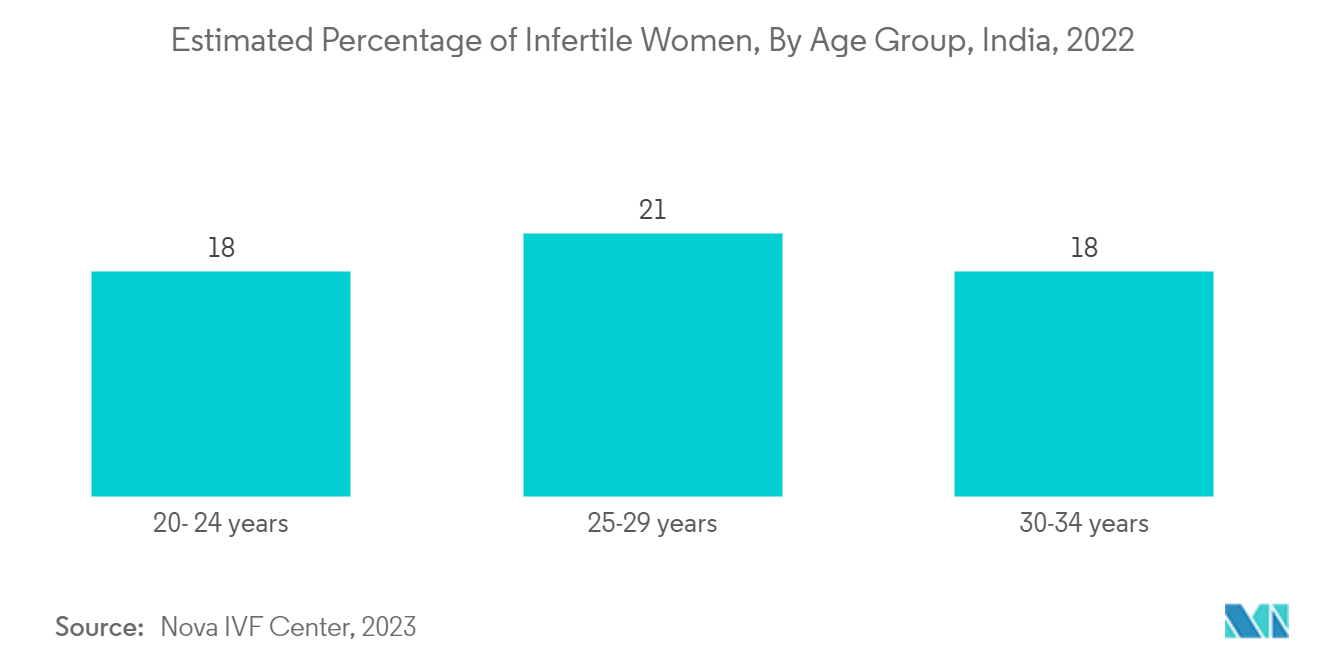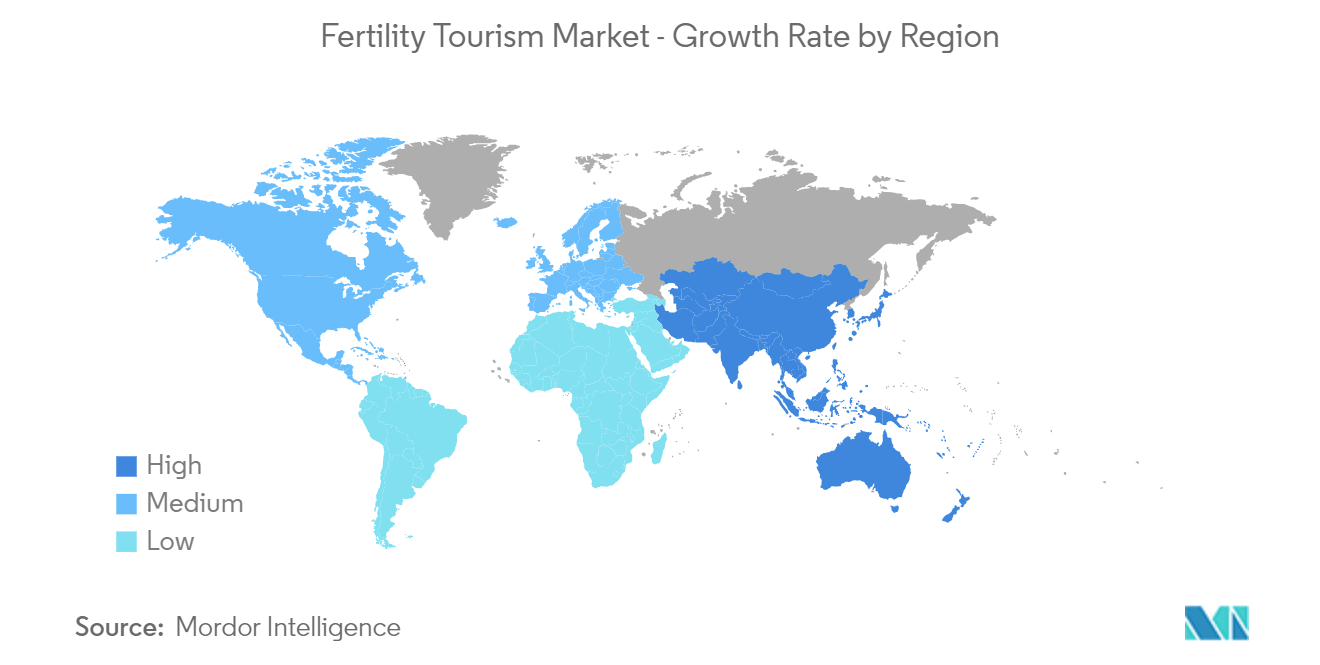Market Trends of Fertility Tourism Industry
Above 35 Years Segment is Expected to Witness Significant Growth
The age group 35 years or above is more susceptible to infertility and is anticipated to drive the demand for fertility treatments. Most of the population of the age group across the countries are most affected, and due to the high cost of treatment in the developed countries and the lack of treatment options in lower-income countries, they travel to other countries for affordable treatment. This is expected to increase the availability of services for this age group and fuel the growth of the segment.
The data updated by the CDC in April 2023, fertility in women decline steadily with age, and women aged 35 years tend to get treatment for infertility. In addition, various studies and reports have suggested that women of age 35 or more show a decline in the chance of conception and pregnancy and have 54% or 56% chances of getting pregnant.
In addition, according to WHO, infertility has become common due to various factors such as an increase in alcohol consumption, smoking, an increased number of obese people, and increasing stress causing hormonal imbalance. Alcohol is frequently used by women to cope with psychological distress, and people who have an alcohol use problem are more likely to also have depression. According to research published in the International Journal of Mental Health in October 2022, depression was the predictive variable of problematic alcohol intake among women aged 35 years or more, and alcohol abuse was the predominant pattern with clinical depression among women in this age group during the study period. Hence, the burden of infertility among women above 35 years of age is expected to contribute to the segment growth during the forecast period.

Asia-Pacific is Expected to be the Fastest Growing Region Over the Forecast Period
The fertility supplement market in the Asia-Pacific is seeing growth and is expected to grow in the forecast period owing to the availability of numerous fertility clinics and the increasing number of tourists to the countries for fertility treatments.
The number of tourists coming to countries such as India, China, Japan, and Thailand, among other countries, for fertility treatment is a major factor that is accelerating the growth of the fertility tourism market in the Asia-pacific region. For instance, as per data updated by Nova IVF Center, Bangalore, India, in January 2023, nearly 49% of the international patients visited Nova IVF for fertility treatment, and they were from other parts of Asia, and 25% were from the African continent. Additionally, as per the source above, in 2022, there was a 46% increase in the number of patients for IVF treatment from Africa, and it increased from 2021.
Additionally, as per a press release by Bangkok Central Clinic in April 2023, Thailand has become one of the most preferred destinations for fertility tourism due to the available state-of-the-art medical facilities coupled with the affordable cost of treatment. Such instances indicate the growing demand for fertility tourism in countries across the region and are anticipated to create demand for fertility tourism in countries across the Asia-pacific region, driving the overall market growth.
Furthermore, the launch of fertility clinics in popular medical tourist destinations to meet the demand for fertility treatments is further expected to drive market growth. For instance, in December 2022, the government of Karnataka reported its plans to launch in vitro fertilization (IVF) clinics in government hospitals to tackle the cost of the procedures in private clinics. In addition, in October 2022, the government of Australia launched the first public IVF clinic, and Victoria has become the first state to offer publicly funded IVF treatments at a new clinic for up to 4,000 Victorians annually. Thus, the demand for fertility tourism has increased as a result of the availability of several clinics and the treatments they offer in most medical tourism destinations, driving the overall market growth.


